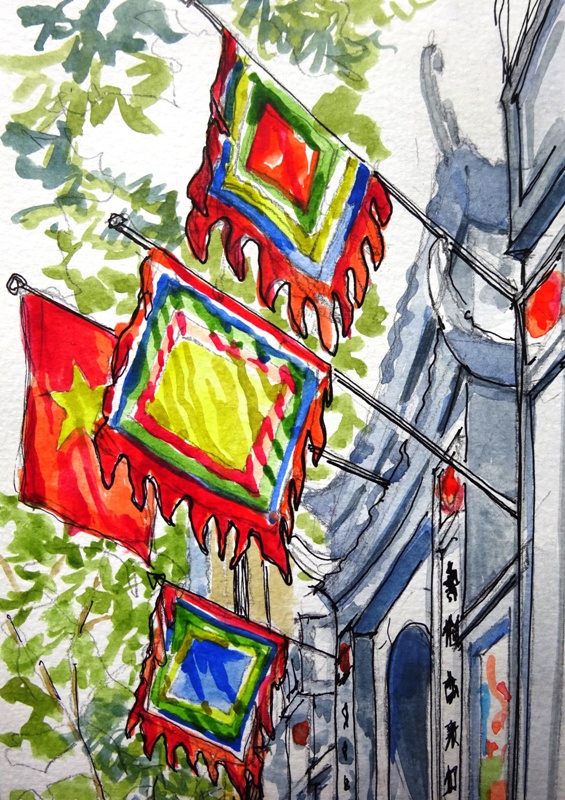Traditional flags and their meanings in Vietnam
Flags have been used to communicate meanings, directions and identities for over 6,000 years. The earliest known flag is a bronze relic from Iran dated around 4,000BC. I never thought much about the meanings of flags until I moved to Vietnam where they are far more common than in my native England. Neighborhoods in Vietnam are transformed during festivals and national holidays by the brilliant red and yellow national flags. Areas around temples are sometimes festooned with striped buntings that are strung from post to post.
The national flag, with its red background and yellow star, takes its styling from the Soviet hammer and sickle flag which also includes a yellow star. In Vietnam, the star represents the five sections of society: farmers, intellectuals, factory workers, businessmen and the military. Yellow is the color of the Vietnamese people and red is universally used to signify revolution, strength and courage. In the alleys and narrow streets of Hanoi, a few scarlet and yellow flags projecting from balconies and upper storey windows instantly inject a feeling of national pride and celebration.
The large temple flags with their jagged or toothed edges make a bold statement, don’t they? These are Buddhist in origin but have been adopted more widely within the special blend of religion and ancestor worship practiced in Vietnam. The flags outside a large temple will each have a different color for the central square. Blue is the color of compassion, yellow is balance, red is for the blessings of Buddha’s teaching, orange is for wisdom and white represents purity and liberation. The size of the flag will denote the importance of the site. Ancient temples display much larger flags than more modern or lesser temples and meeting houses. Sometimes you will see a small flag outside someone’s home – this usually indicates that there is a monk residing within. So, don’t display Buddhist flags at your house unless you want the neighbors to bring offerings to your door!
Triangular flags mark the route to the home of the deceased during the funeral week. Black and white is often used for these flags in Hanoi. In Hoi An and Da Nang I saw maroon and dark blue and ochre to mark these sad occasions.
Small striped and squared flags will lead the way to the temple door. The closer to the temple, the larger the flags become. Once inside the temple enclosure, the positioning of flags around the main courtyard convey meanings about festivals or other temple events. Usually, a yellow flag representing the sun occupies a central position, blue and green flags representing nature and sky will be in the eastern corners. A white flag for the moon and metal will be in the west, and black or indigo in the north represent water.
For parades, the flags take on even more meanings. The red flag representing the phoenix should take the lead. Behind that the dark turtle is flanked by the blue dragon to the left and the white tiger to the right. These complex messages are easily read by locals, but I just marvel at the spectacle and now I know never to pass a massive temple flag without stopping to explore the ancient pagoda within.
BIO: A professional artist and author of A Week in Hoi An, Bridget March specializes in urban landscapes and aims to reveal the hidden treasures of city life and small town cultures through her illustrations. Bridget offers art classes and sketching tours in Ho Chi Minh City. For more of Bridget’s work, visit bridgetmarch.co.uk





